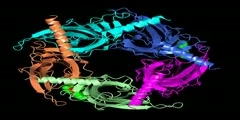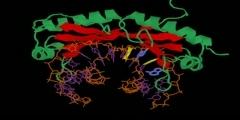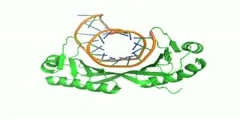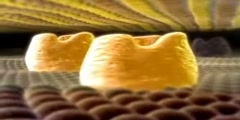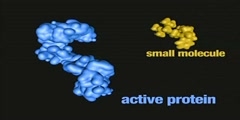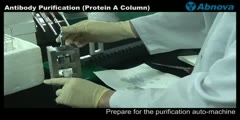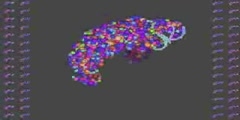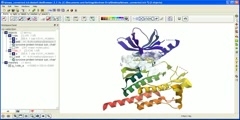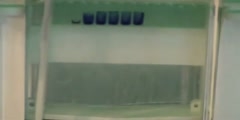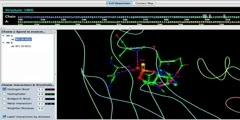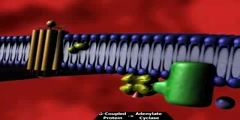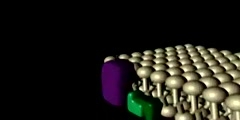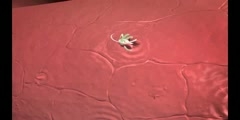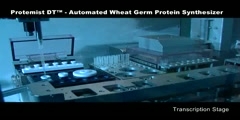Acetylcholine Binding Protein with Cocaine Bound
The chemical compound acetylcholine (often abbreviated ACh) is a neurotransmitter in both the peripheral nervous system (PNS) and central nervous system (CNS) in many organisms including humans. Acetylcholine is one of many neurotransmitters in the autonomic nervous system (ANS) and the only neurotransmitter used in the motor division of the somatic nervous system. (Sensory neurons use glutamate and various peptides at their synapses.) Acetylcholine is also the principal neurotransmitter in all autonomic ganglia. Cocaine (benzoylmethylecgonine) is a crystalline tropane alkaloid that is obtained from the leaves of the coca plant.[5] The name comes from "coca" in addition to the alkaloid suffix -ine, forming cocaine. It is a stimulant of the central nervous system, an appetite suppressant, and a topical anesthetic. Specifically, it is a serotonin–norepinephrine–dopamine reuptake inhibitor, which mediates functionality of these neurotransmitters as an exogenous catecholamine transporter ligand. Because of the way it affects the mesolimbic reward pathway, cocaine is addictive.[6] Its possession, cultivation, and distribution are illegal for non-medicinal and non-government sanctioned purposes in virtually all parts of the world. Although its free commercialization is illegal and has been severely penalized in virtually all countries, its use worldwide remains widespread in many social, cultural, and personal settings. Molecular binding is an attractive interaction between two molecules which results in a stable association in which the molecules are in close proximity to each other. The result of molecular binding is formation of a molecular complexes. Types: Molecular binding can be classified into the following types: * non-covalent – no chemical bonds are formed between the two interacting molecules hence the association is fully reversible * reversible covalent – a chemical bond is formed, however the free energy difference separating the non-bonded reactants from bonded product is near equilibrium and the activation barrier is relatively low such that the reverse reaction which cleaves the chemical bond easily occurs * irreversible covalent – a chemical bond is formed in which the product is thermodynamically much more stable than the reactants such that the reverse reaction does not take place Examples: Molecules that can participate in molecular binding include proteins, nucleic acids, carbohydrates, lipids, and small organic molecules such as drugs. Hence the types of complexes that form as a result of molecular binding include: * protein – protein * protein – DNA * protein – hormone * protein – drug Proteins that form stable complexes with other molecules are often referred to as receptors while their binding partners are called ligands.
